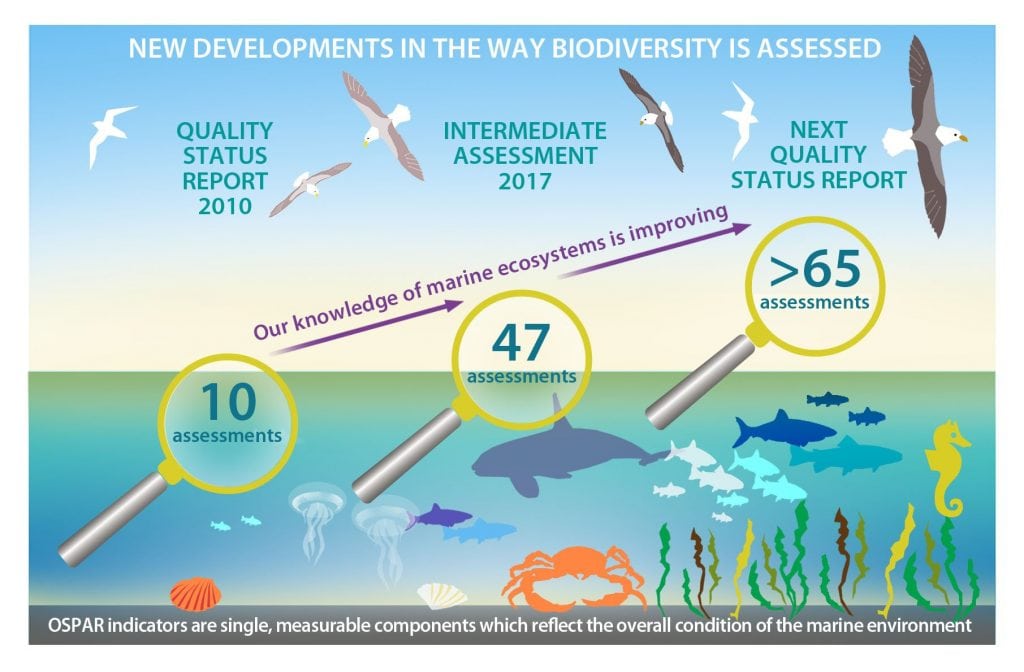Marine
IA2017 – New developments in the way biodiversity is assessed
September 11, 2017 by Marine Scotland Communications No Comments | Category Collaborations, Marine Directorate general, Marine Directorate Science, Marine Directorate Surveys
OSPAR is committed to protecting and conserving ecosystems and biodiversity through the management of human activities, guided by an ecosystem-based approach to management.
The development of internationally coordinated biodiversity indicators is a relatively new field for OSPAR. In the Quality Status Report 2010, OSPAR assessed ten ecological quality objectives developed for the North Sea which focused mainly on the interactions between mobile species and human pressures. However, they lacked agreed tools to make a fuller assessment of the health of the key structural and functional building blocks of the ecosystem: the habitats of the seafloor and the water column, their biological communities and the foodweb processes that connect them.
Since 2010, OSPAR scientists and policymakers have developed indicators that can help to assess pelagic and benthic habitats and their communities, and foodwebs. These indicators are assessed for the first time in the Intermediate Assessment 2017 (IA 2017), moving OSPAR towards a more robust regional-scale assessment of ecosystem status. These indicators identify significant changes occurring in plankton communities, which inhabit the water column and are the base of the marine foodweb and have the potential to track food-web structure and function in the ecosystem.
Progress has been significantly boosted through the European Commission’s funding of the EcApRHA (Applying an Ecosystem Approach to (sub) Regional Habitat Assessment) project which has fed into the assessments presented in IA 2017. EcApRHA created opportunities for policy and science representatives to interact and so ensure that project results are fit for OSPAR purposes.
EcApRHA has delivered an action plan to address knowledge gaps which can be built into further indicator development across the OSPAR Maritime Area and so support further indicator development potential. As OSPAR continues to develop its approaches and assessment methods with each additional assessment cycle, understanding of natural and human-induced change in the complex and dynamic marine environment will further improve.
Tags: Defra, environment, JNCC, north east atlantic, OSPAR, SEPA



Leave a comment